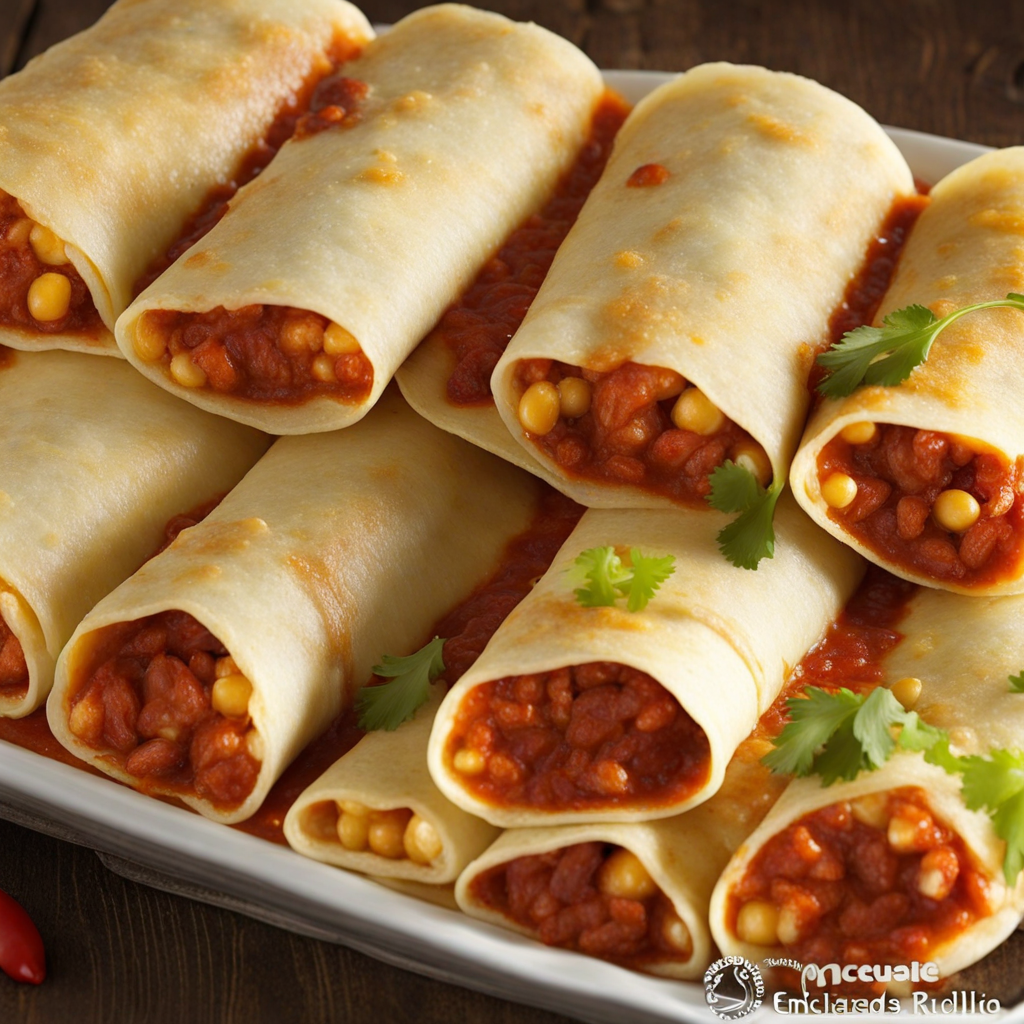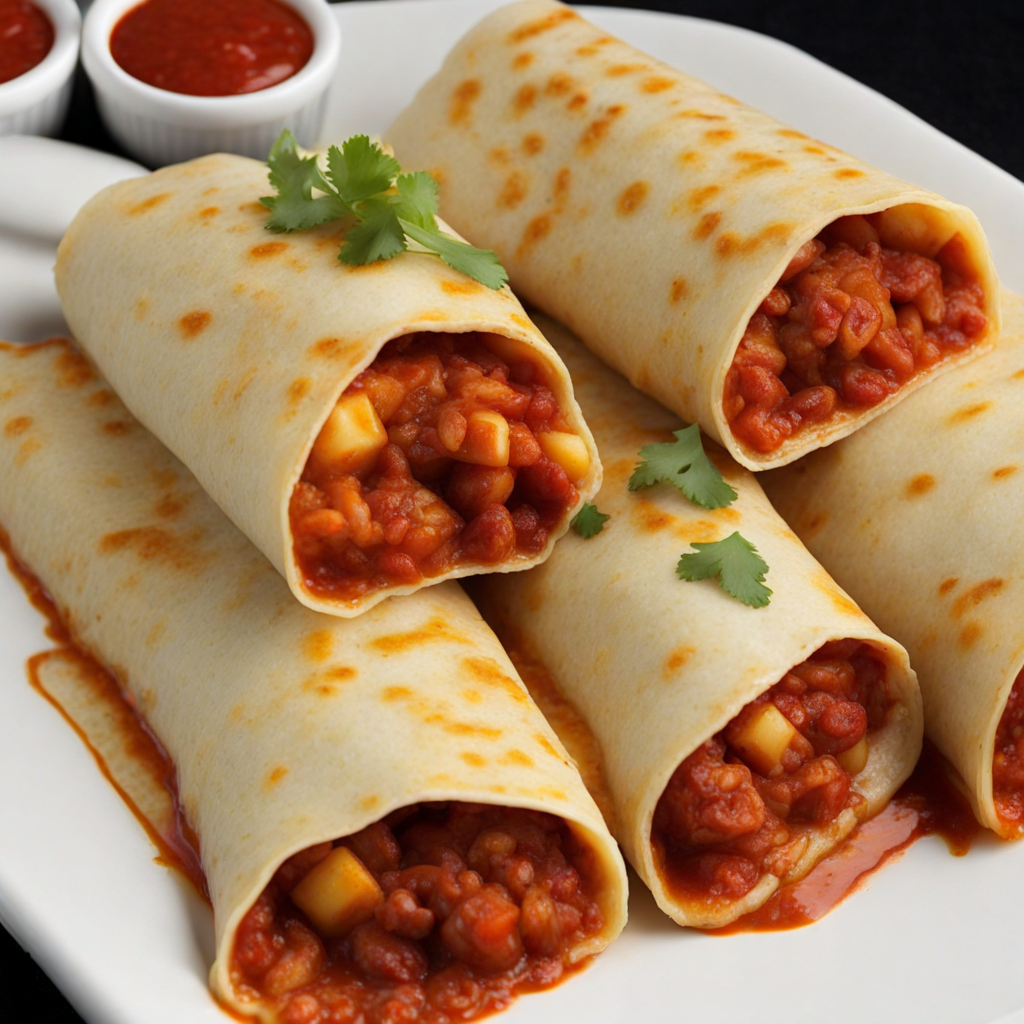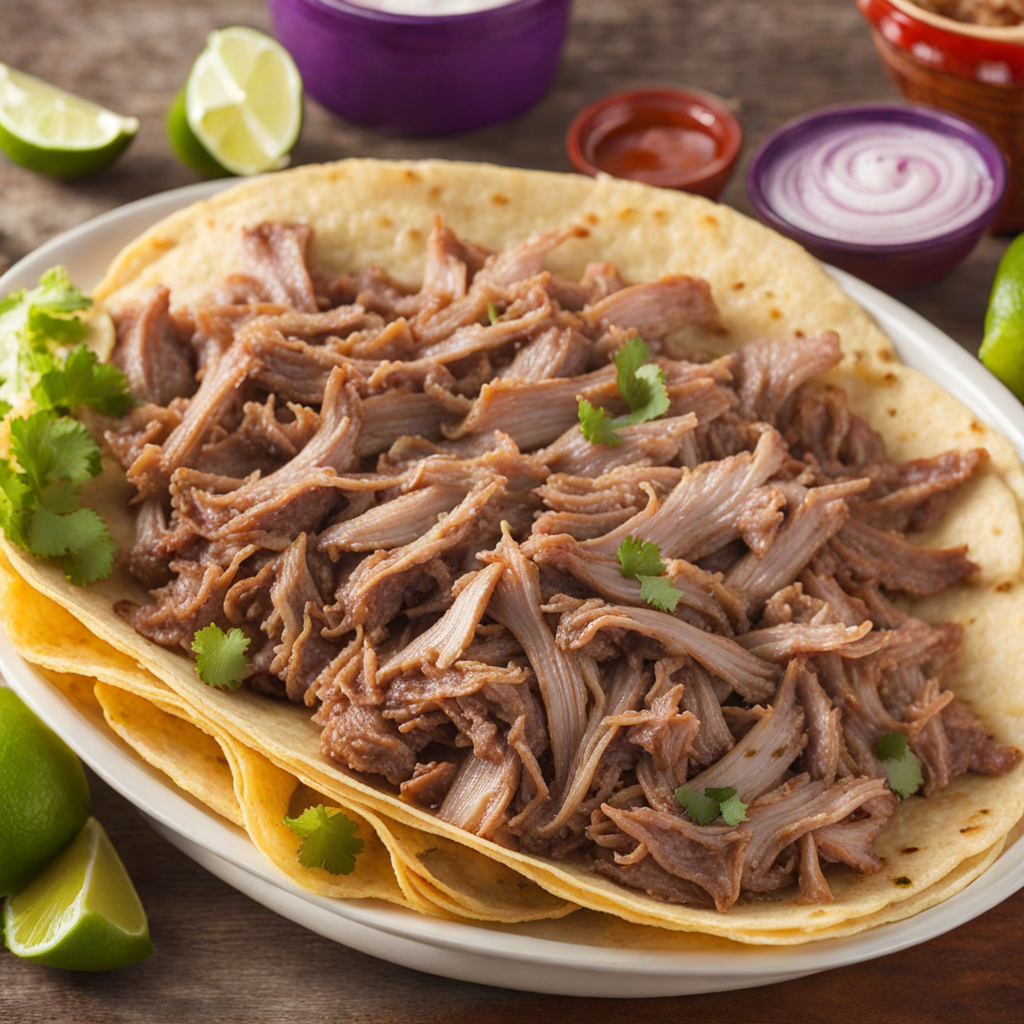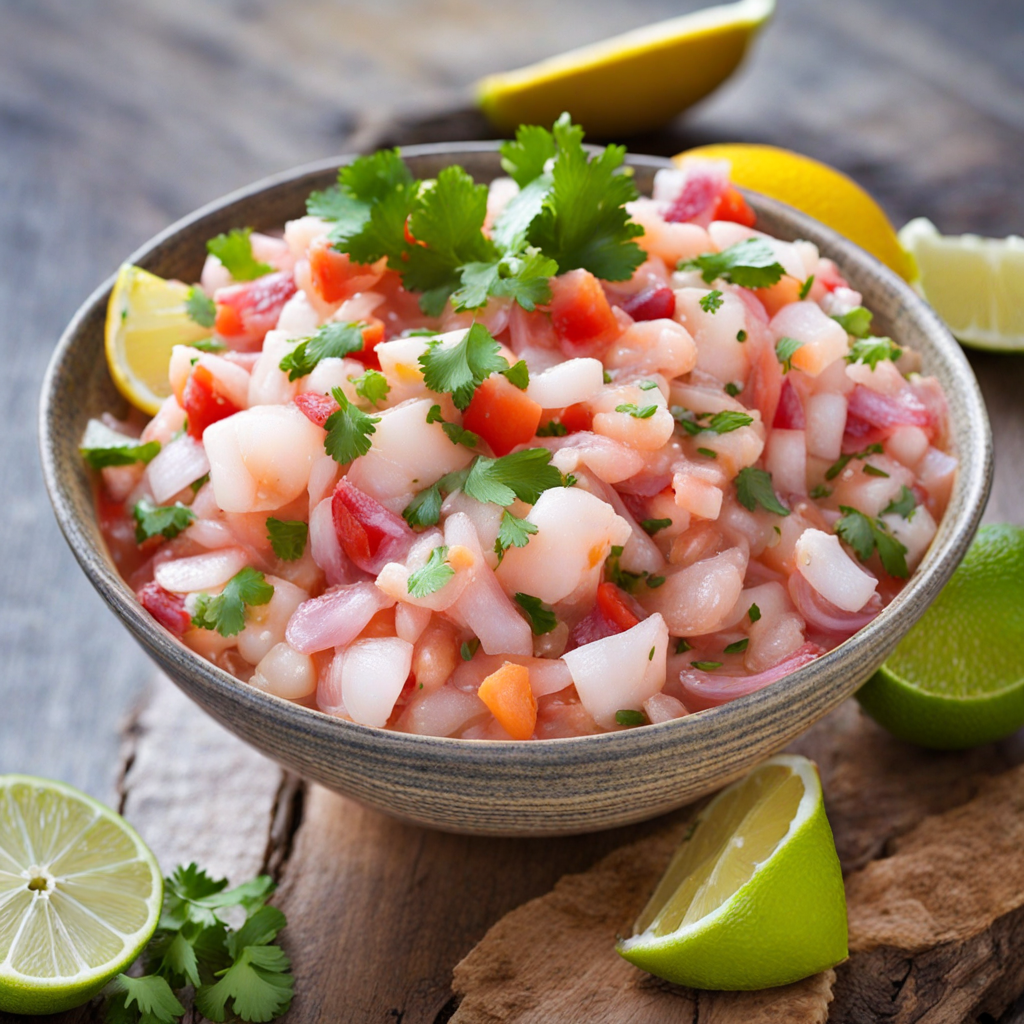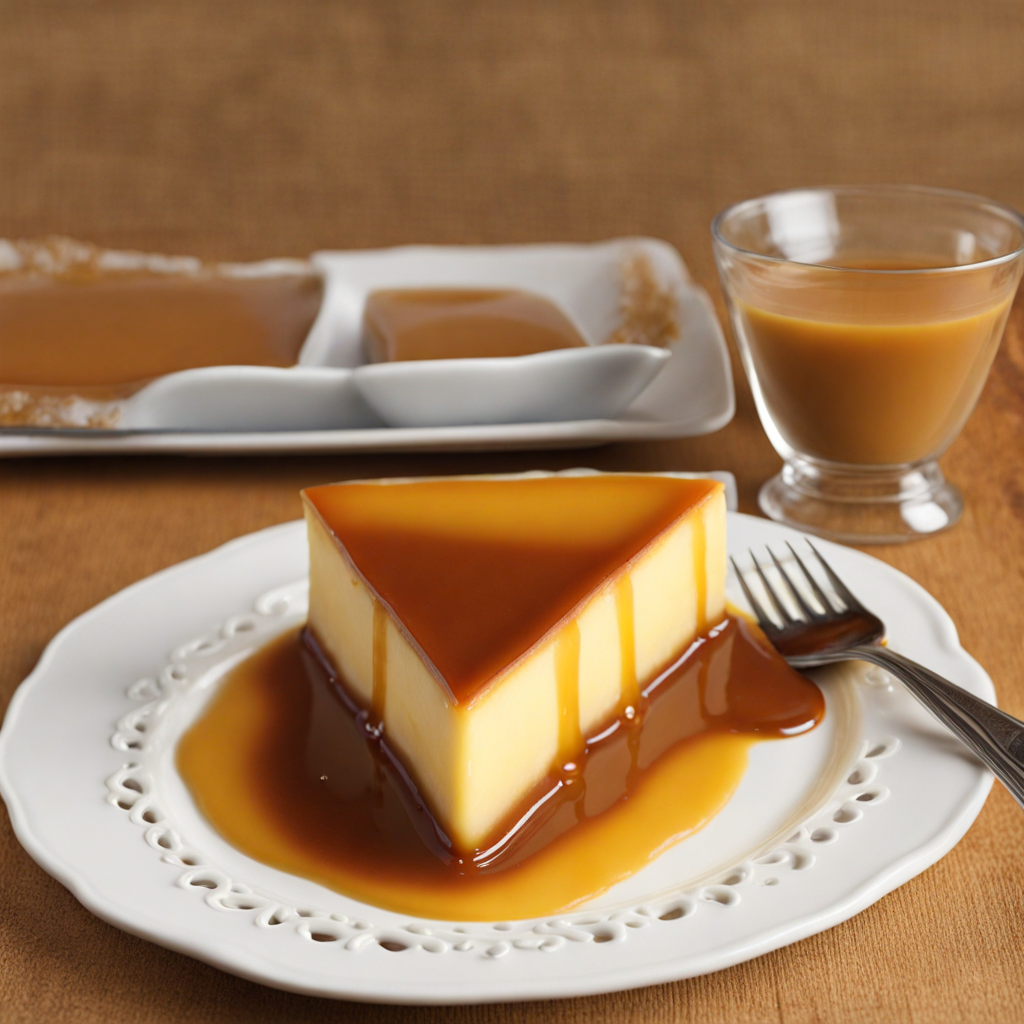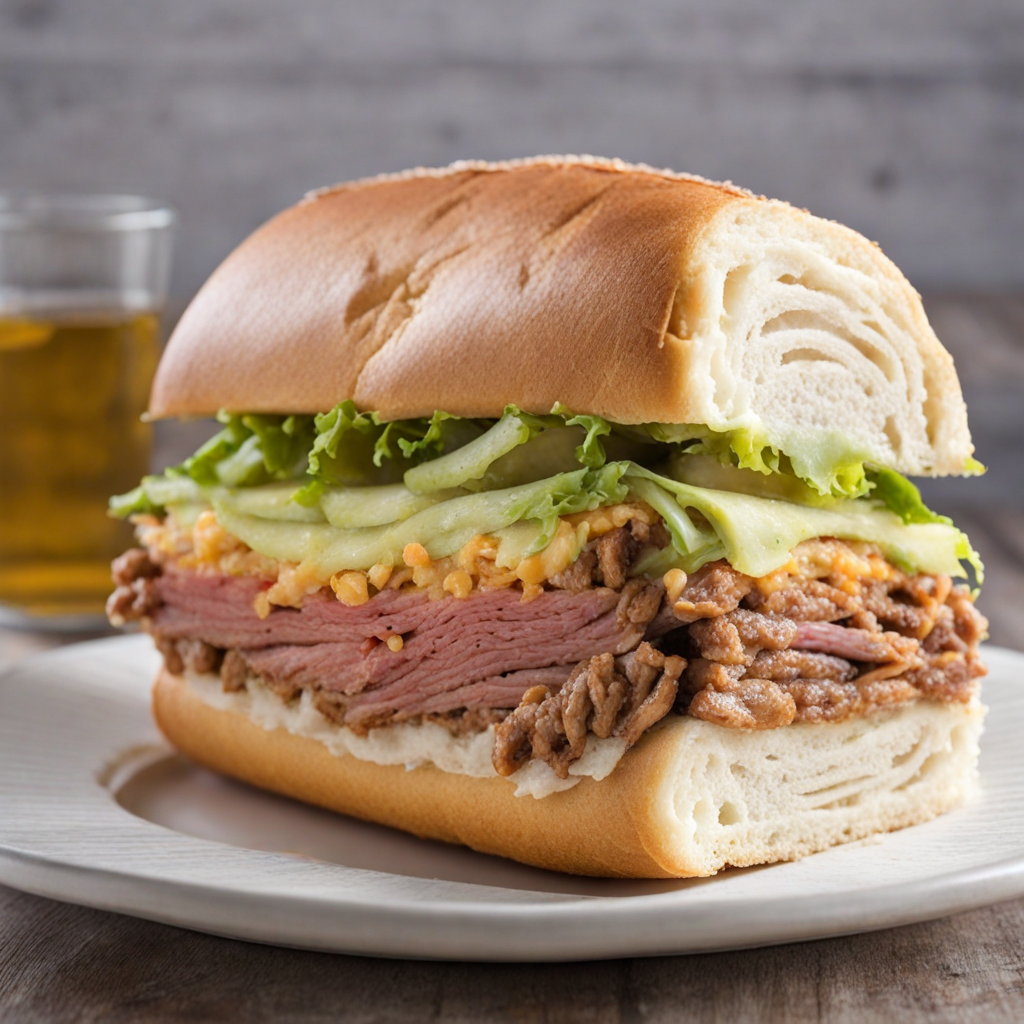Enchiladas
Enchiladas are a traditional Mexican dish that offers a delightful combination of flavors and textures. They consist of corn tortillas that are lightly fried and then filled with a variety of ingredients, such as shredded chicken, beef, cheese, or beans. The tortillas are rolled up, creating a comforting cylindrical shape, and are often topped with a rich chili sauce, which can range from mild to spicy, depending on your preference. This sauce not only adds a vibrant color but also infuses the enchiladas with a depth of flavor that is truly irresistible. One of the most appealing aspects of enchiladas is their versatility. Each region in Mexico may have its own unique take on the dish, using local ingredients and spices to create distinct flavors. For instance, enchiladas can be garnished with fresh toppings like chopped onions, avocado, cilantro, or crumbled queso fresco, adding a refreshing contrast to the warm, savory filling. Additionally, the dish can be served with a side of rice and beans, making it a hearty meal that satisfies the appetite and pleases the palate. Eating enchiladas is not just about the taste; it's also an experience that celebrates Mexican culture and tradition. The act of preparing enchiladas often involves family gatherings and communal cooking, allowing loved ones to bond over the process. Each bite reveals layers of flavor—from the soft, warm tortilla to the savory filling and the zesty sauce—making enchiladas a comforting dish that invites you to explore the rich culinary heritage of Mexico.
How It Became This Dish
The History of Enchiladas: A Culinary Journey Through Mexico Enchiladas, a quintessential Mexican dish, are a vibrant tapestry of flavors and history woven through centuries of cultural evolution. The name "enchilada" derives from the Spanish verb "enchilar," meaning to season or decorate with chili. This dish primarily consists of corn tortillas rolled around a filling and smothered in a spicy sauce, typically made from chili peppers. Its origins can be traced back to ancient Mesoamerican cultures, revealing a rich narrative of culinary tradition, adaptation, and cultural significance. #### Origins: A Culinary Foundation The roots of enchiladas can be traced back to the ancient civilizations of Mesoamerica, particularly the Aztecs and Mayans, who relied heavily on corn as a staple food. Corn, or maize, was not just a dietary foundation; it held deep spiritual significance, being considered a gift from the gods. The practice of using corn tortillas, which are flatbreads made from nixtamalized corn, is believed to date back to around 1500 B.C. These tortillas served as a versatile vehicle for various fillings, long before they were dubbed "enchiladas." The earliest forms of enchiladas likely emerged as simple tortillas filled with meats, beans, or vegetables, then rolled up and consumed as convenient food for laborers and warriors. These early iterations were not necessarily covered in sauce, but they set the stage for the development of the dish we know today. The concept of wrapping food in tortillas has remained a staple of Mexican cuisine, illustrating a cultural practice of resourcefulness and innovation. #### Cultural Significance Enchiladas hold a special place in Mexican culinary culture, transcending mere sustenance. They embody the essence of Mexican hospitality and community, often served during family gatherings, celebrations, and traditional feasts. The dish is a canvas for regional variations, reflecting the diverse ingredients and cooking techniques found throughout Mexico. In the central and southern regions of Mexico, enchiladas are often filled with a mixture of shredded chicken, beef, or cheese, while the northern regions may incorporate ingredients such as potatoes or even seafood. The type of sauce used also varies widely, ranging from red chili sauce (salsa roja) to green tomatillo sauce (salsa verde), each imparting its unique flavor profile. This regional diversity showcases the importance of local ingredients, seasonal availability, and traditional cooking methods. Enchiladas are not merely a dish but a cultural symbol, representing the fusion of indigenous and Spanish influences that characterize Mexican cuisine. The Spanish colonization of the 16th century introduced new ingredients, such as cheese and various meats, which melded with traditional Mesoamerican practices. This fusion gave rise to a culinary landscape rich in flavors, textures, and colors, with enchiladas emerging as a beloved staple. #### Development Through Time As Mexico evolved through centuries of historical, political, and social change, so too did the enchilada. During the colonial period, the Spanish introduced new cooking techniques and ingredients, leading to an expansion of the enchilada's potential. The incorporation of cheese, for example, added a creamy texture and richness that became characteristic of many enchilada recipes. The 19th century saw the rise of enchiladas as a popular street food. Vendors began selling them in markets and on street corners, making them accessible to the masses. This shift marked a democratization of the dish, allowing people from various socio-economic backgrounds to enjoy enchiladas. As they became a staple of everyday life, enchiladas also started to appear in homes, adapting to family recipes passed down through generations. In the 20th century, Mexican cuisine gained international recognition, and enchiladas became a prominent dish in Mexican restaurants around the world. The popularity of Mexican food surged, particularly in the United States, where adaptations of enchiladas appeared, often simplified for broader palates. For instance, the introduction of sour cream and guacamole as toppings became a hallmark of Tex-Mex cuisine, a fusion of Mexican and American culinary traditions that further diversified the enchilada. #### Modern Variations and Global Influence Today, enchiladas continue to evolve, reflecting contemporary tastes and dietary preferences. The rise of vegetarianism and veganism has led to the creation of plant-based enchiladas, filled with ingredients such as beans, mushrooms, or roasted vegetables, and topped with cashew-based sauces. Gluten-free alternatives, using corn flour or other substitutes, have also become popular, ensuring that enchiladas remain inclusive and adaptable. Internationally, enchiladas have inspired chefs and home cooks alike to experiment with flavors and presentations. From gourmet versions topped with truffle oil to fusion dishes incorporating Asian or Mediterranean ingredients, the enchilada has transcended its traditional roots while retaining its essence. These innovations illustrate the adaptability of Mexican cuisine, which continually embraces new influences while honoring its rich heritage. #### Conclusion: A Dish of Resilience and Community The history of enchiladas is a story of resilience, community, and cultural pride. From its ancient origins as a simple corn tortilla filled with local ingredients to its modern-day interpretations enjoyed around the world, enchiladas encapsulate the evolution of Mexican cuisine. They are more than just a meal; they serve as a connection to the past, a celebration of community, and a testament to the rich cultural tapestry that defines Mexico. As enchiladas continue to evolve, they remind us of the importance of preserving culinary traditions while embracing innovation. Whether enjoyed at a bustling street stall in Mexico City or served at a family gathering, enchiladas remain a beloved dish that nourishes both body and spirit, inviting us to savor the flavors of history in every bite.
You may like
Discover local flavors from Mexico


